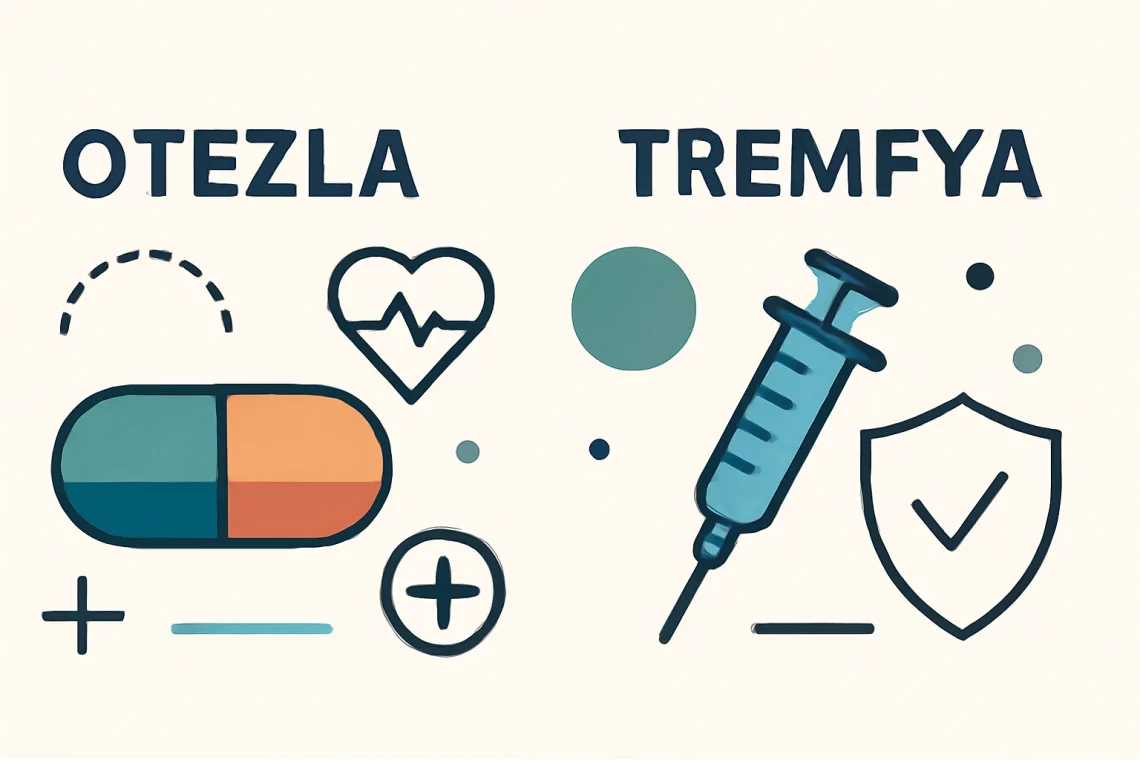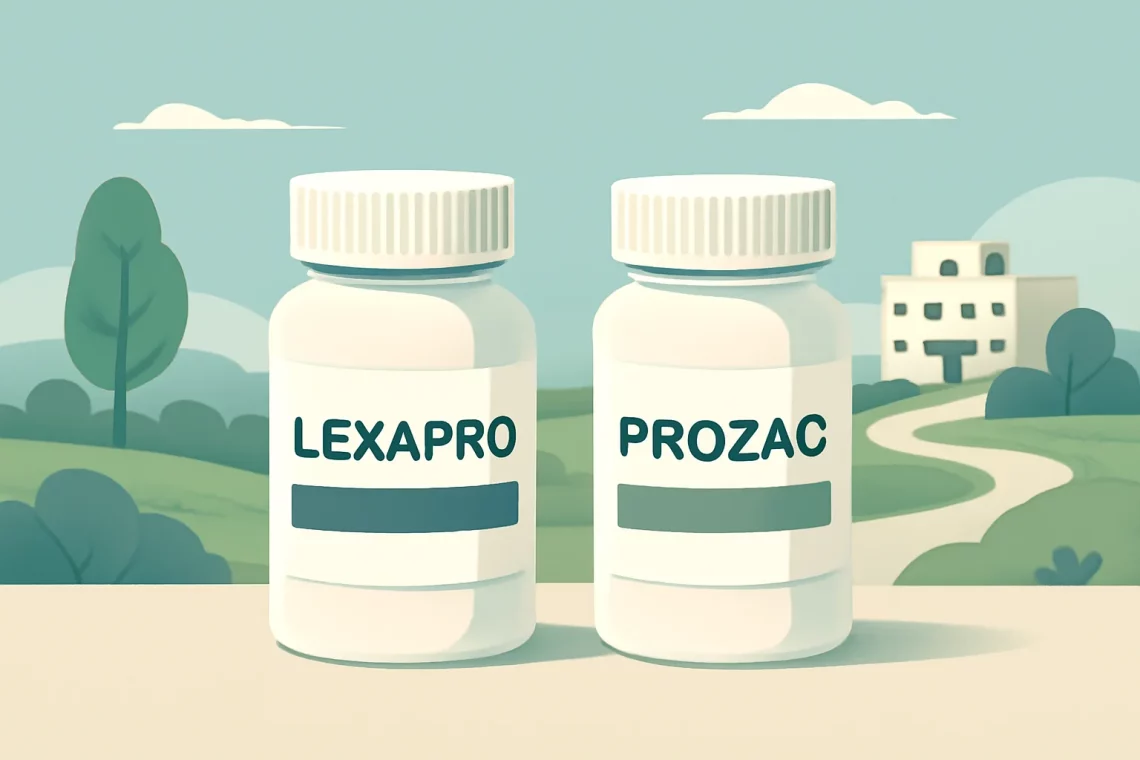Health
-
Meloxicam vs Piroxicam: Which Anti-Inflammatory Drug is Better?
Meloxicam and piroxicam are two widely used nonsteroidal anti-inflammatory drugs (NSAIDs) that play significant roles in the management of pain and inflammation. Both medications are commonly prescribed for conditions such as arthritis, muscle pain, and other inflammatory disorders. Their effectiveness in alleviating pain makes them popular choices among healthcare providers, but they differ in their chemical structures, mechanisms of action, and potential side effects. Understanding these differences is crucial for patients and healthcare professionals alike, as it can influence treatment decisions and patient outcomes. In the realm of pain management, the choice between meloxicam and piroxicam is often dictated by the specific needs of the patient, including their medical history,…
-
Lurasidone vs Quetiapine: Which Antipsychotic is Right for You?
Lurasidone and Quetiapine are two atypical antipsychotic medications that are commonly prescribed for various mental health conditions. Both medications have gained recognition for their efficacy in treating disorders such as schizophrenia and bipolar disorder. However, they differ in their pharmacological profiles, side effects, and patient experiences. As mental health awareness continues to grow, understanding these medications becomes crucial for individuals seeking effective treatments. The choice between Lurasidone and Quetiapine may depend on various factors including the specific diagnosis, patient history, and individual response to treatment. In recent years, the dialogue surrounding mental health has evolved, encouraging open conversations about the importance of medication in managing symptoms. Patients and healthcare providers…
-
Clonazepam vs Ativan: Understanding Their Differences and Uses
Clonazepam and Ativan are two medications that fall under the category of benzodiazepines, which are widely prescribed for their sedative, anti-anxiety, and muscle-relaxing properties. These medications have gained prominence for their effectiveness in treating various mental health conditions, including anxiety disorders, panic attacks, and seizures. The rise in the prescription of benzodiazepines has led to a growing interest in understanding the differences and similarities between Clonazepam and Ativan, especially among those seeking relief from anxiety and related disorders. As the demand for effective treatment options increases, patients and healthcare providers alike are keen to compare these two medications. While both Clonazepam and Ativan can provide significant benefits, they also come…
-
Botox vs Dysport: Which Anti-Aging Treatment is Right for You?
Botox and Dysport are two of the most recognized names in the world of cosmetic treatments, specifically in the realm of wrinkle reduction and facial rejuvenation. Both of these injectable treatments have gained immense popularity due to their effectiveness in minimizing the appearance of fine lines and wrinkles. They work by temporarily paralyzing the muscles that cause facial expressions, leading to a smoother and more youthful appearance. While many people may consider these treatments interchangeable, there are subtle differences between them that can influence a person’s choice. Factors such as onset time, duration of effects, and individual responses to the treatments can vary, leading to different preferences among users. Understanding…
-
Meloxicam vs Ibuprofen: Which Pain Reliever Is Right for You?
In the realm of pain relief and inflammation management, Meloxicam and Ibuprofen are two commonly used nonsteroidal anti-inflammatory drugs (NSAIDs) that serve as effective options for many individuals. Both medications are prevalent in treating various conditions, including arthritis, muscle pain, and other inflammatory disorders. While they share similarities in their mechanisms of action, their differences can significantly influence their suitability for different patients and conditions. Understanding these distinctions is crucial for making informed decisions about pain management and overall health. Meloxicam, often prescribed for chronic inflammatory conditions, is known for its long half-life, allowing for once-daily dosing. On the other hand, Ibuprofen is a familiar over-the-counter option that is widely…
-
Otezla vs Tremfya: A Comprehensive Comparison of Two Treatments
When it comes to managing chronic conditions such as psoriasis and psoriatic arthritis, patients often find themselves navigating a complex landscape of treatment options. Among these, Otezla and Tremfya have emerged as popular therapies, each with its unique approach and benefits. Understanding these medications is crucial for patients looking to make informed decisions about their health. Both Otezla and Tremfya target the underlying causes of these conditions, aiming to alleviate symptoms and improve the quality of life for those affected. Otezla, an oral medication, works by inhibiting an enzyme involved in the inflammatory process, thus reducing the overactive immune response that characterizes psoriasis and psoriatic arthritis. On the other hand,…
-
Cymbalta vs Savella: A Comprehensive Comparison of Two Medications
Cymbalta and Savella are two medications frequently discussed in the context of treating chronic pain and mood disorders. Both belong to a class of drugs known as serotonin-norepinephrine reuptake inhibitors (SNRIs), which are designed to help regulate the levels of serotonin and norepinephrine in the brain. These neurotransmitters play crucial roles in mood regulation and pain perception, making these medications valuable tools in managing conditions such as fibromyalgia, anxiety disorders, and major depressive disorder. Despite their similar mechanisms of action, Cymbalta and Savella are prescribed for different indications and can have varying effects on patients. Understanding the distinctions between these two medications is essential for patients and healthcare providers alike.…
-
Lexapro vs Prozac: A Comprehensive Comparison of Two Antidepressants
Depression and anxiety are two of the most common mental health disorders affecting millions of individuals worldwide. As awareness of mental health issues has grown, so too has the range of treatment options available. Among these options, selective serotonin reuptake inhibitors (SSRIs) have gained prominence for their efficacy in treating depression and anxiety-related disorders. Lexapro and Prozac are two of the most well-known SSRIs prescribed by healthcare professionals. While both medications aim to balance serotonin levels in the brain, their formulations and specific uses can vary significantly. Understanding the differences between Lexapro and Prozac is crucial for patients seeking effective treatment for mental health issues. Factors such as side effects,…
-
Cephalexin vs Doxycycline: Key Differences and Uses Explained
Cephalexin and doxycycline are both antibiotics that serve critical roles in the treatment of bacterial infections. They belong to different classes of antibiotics, which means they work in distinct ways and target various types of bacteria. Understanding their mechanisms, uses, and potential side effects can help patients make informed decisions when prescribed these medications. Antibiotics have been a cornerstone of modern medicine, providing essential treatments for infections that could otherwise be life-threatening. However, their effectiveness can depend on the specific type of bacteria causing the infection, as well as patient-specific factors such as age, health status, and potential drug interactions. This complex interplay highlights the importance of understanding the differences…
-
Januvia vs Glyburide: Which Diabetes Medication is Right for You?
Managing diabetes effectively is a critical aspect of maintaining overall health and well-being for those diagnosed with this chronic condition. The landscape of diabetes medications is diverse, with various options tailored to meet individual needs. Among the prominent medications prescribed are Januvia and Glyburide, both of which serve to regulate blood sugar levels but operate through different mechanisms. Understanding the differences, benefits, and potential drawbacks of these medications can empower patients and caregivers to make informed decisions about diabetes management. As diabetes continues to rise globally, it is essential for patients to familiarize themselves with the various treatments available. The choice between medications like Januvia and Glyburide can significantly influence…







































